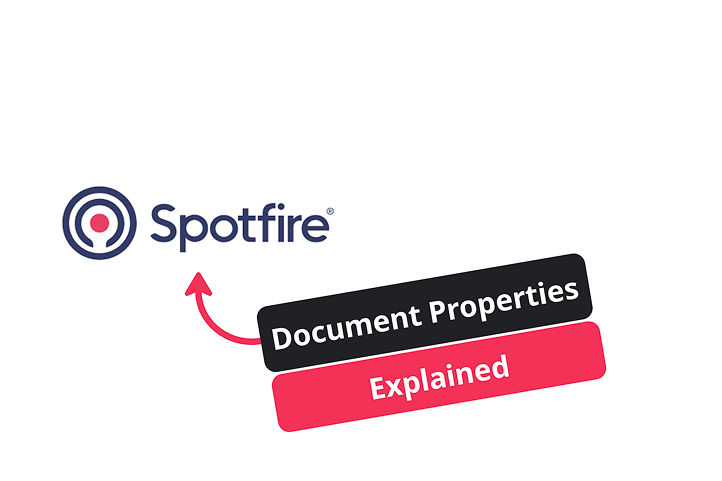
October 1, 2025
Select an option to view the article tailored to your learning style
For those who want to dive deep into the technical details
For those who want to understand the big picture
Few minutes read that gives you the high-level points
You can watch the full tutorial video below.
If you have been using Spotfire for a while, you already know how flexible it is. But there are parts of the platform that most people never touch. Document properties are one of those features.
Most users recognize the menu, but very few realize how powerful these properties can be once you start using them the right way. They are often the difference between a static dashboard and something that feels more like an interactive internal application.
This is the first part of a larger series on advanced Spotfire capabilities. Today we are starting simple with document properties. They are the foundation that makes the more advanced features possible.
Think of a document property as a variable. It is just a value you store that Spotfire can reference in many different areas.
A document property is a typed value stored inside your analysis.
You can create them under:
File → Document Properties → Properties
Assign a name, choose a type such as string, integer, real, currency, date, or boolean, give it a default value, and you are set.
Once the value exists, you can use it in:
This creates a single source of truth that your visuals and logic can reference.
Document properties update instantly, but keep these notes in mind:
Used in the right places, they perform very well. Just be mindful of where they fit in larger datasets.
Document properties are one of the most underrated features in Spotfire. They seem simple at first, but once you start using them, they unlock:
If you ever feel limited by what Spotfire allows out of the box, document properties are usually the path forward.
This is the first part of a deeper series. We will cover custom expressions, over functions, data functions, and IronPython in upcoming pieces.
If you want help designing internal Spotfire tools or leveling up your dashboards, feel free to reach out at info@aai.agency.